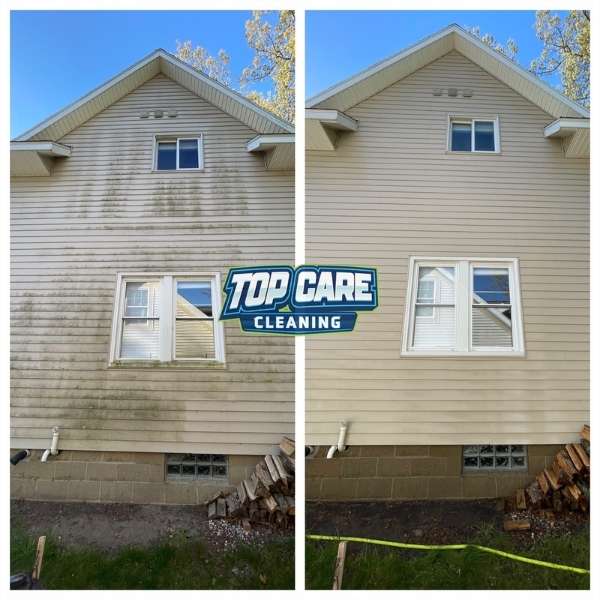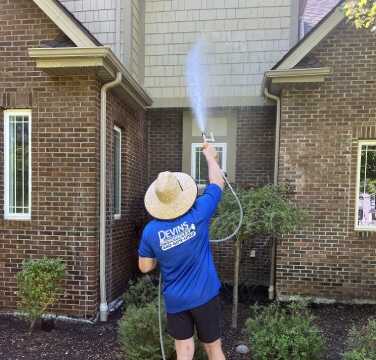Fast and Effective Graffiti Removal in Euclid for Clean, Fresh Walls
Fast and Effective Graffiti Removal in Euclid for Clean, Fresh Walls
Blog Article
Reliable Methods for Graffiti Removal That Recover Surfaces to Their Original State
The obstacle of graffiti removal is diverse, requiring an understanding of various graffiti types and the most effective strategies for restoration. From chemical solutions that cater to specific paint compositions to pressure washing methods that preserve the stability of surface areas, each approach has its values.
Recognizing Graffiti Kind
Recognizing the diverse sorts of graffiti is vital for reliable removal strategies. Graffiti can be extensively classified into several types, each needing different techniques for elimination. The most common kinds include murals, tags, and throw-ups. Tags are the simplest form, including a stylized trademark or logo design, usually produced promptly with spray paint or markers. Their fairly little dimension can make them simpler to eliminate yet can still pose challenges relying on the surface.
Throw-ups are a lot more intricate and usually include larger, bubble-like text filled with a single shade. These items can cover extra location and may require various elimination methods compared to tags. Murals, on the other hand, are complex artworks that can be thorough and fairly large, usually commissioned or developed with consent. The removal of murals offers distinct challenges due to the possibility for damage to the underlying surface and the artistic worth.
Recognizing these distinctions is essential for selecting the right techniques and products for reliable graffiti elimination. Each type not only varies in its visual effect yet additionally in the techniques that will be most reliable in restoring surfaces to their original condition.
Chemical Elimination Approaches
When dealing with graffiti removal, chemical methods are commonly the most effective and efficient strategy for numerous surfaces. These methods utilize specialized formulas developed to damage down the chemical bonds in graffiti, making it much easier to eliminate without harming the underlying product.

It is necessary to choose a chemical eliminator that works with the surface area being treated to avoid damage. Examining the item on a little, unnoticeable location prior to widespread application is a good idea. Additionally, proper safety tools, such as gloves and masks, ought to be worn to ensure safety throughout the elimination process.
As soon as the graffiti has been liquified, it is vital to completely rinse the surface area to remove any chemical residue, which can lead to staining or destruction in time (Graffiti Removal in Euclid). Generally, chemical removal methods use a powerful service for bring back surface areas to their initial state while decreasing prospective damage
Pressure Washing Methods
While chemical removal approaches are extremely effective, pressure cleaning provides an alternative method for graffiti removal that can be equally efficient, specifically on long lasting surface areas. This technique utilizes high-pressure water jets to remove and get rid of graffiti from numerous materials, such as concrete, block, and steel.
The efficiency of pressure cleaning rest on several elements, including the stress setting, nozzle type, and the distance from which the water is applied. Generally, a stress variety of 2,000 to 3,000 PSI is recommended for the majority of surfaces, yet changes may be needed depending upon the substratum's level of sensitivity. Utilizing a follower spray nozzle can help cover bigger areas properly while reducing the threat of damaging the underlying material.
Before press washing, it is vital to assess the graffiti's structure. Water-based paints often respond far better to this technique than oil-based or irreversible pens. Pre-soaking the location with water can boost the elimination procedure by decreasing paint attachment. After the pressure washing is total, surface areas should be inspected for any kind of continuing to be deposit, and a 2nd pass might be required to achieve optimal outcomes. Generally, stress cleaning is a powerful device in the graffiti elimination toolbox.

Eco-Friendly Solutions
Lots of individuals and i was reading this companies are significantly seeking environment-friendly options for graffiti elimination, identifying the importance of minimizing environmental influence. Conventional graffiti elimination techniques frequently include rough chemicals that can be hazardous to both the environment and public health. In contrast, eco-friendly solutions make use of safe and eco-friendly products that properly get rid of graffiti without causing damages to surfaces or launching damaging substances into the environment.
One reliable method is making use of natural solvents, such as citrus-based cleaners, which harness the power of plant-derived active ingredients to damage down paint without leaving toxic deposits. Furthermore, baking soft drink and vinegar mixtures can offer as gentle abrasives that lift graffiti while being secure for the environment.
An additional innovative strategy is utilizing green pressure cleaning systems that use less water and energy compared to conventional approaches. These systems frequently integrate specialized nozzles and eco-conscious detergents that enhance efficacy while decreasing waste.
Preventative Steps
Preventative procedures play an important duty in combating graffiti vandalism and decreasing its occurrence. By applying critical techniques, building proprietors and communities can hinder prospective culprits and minimize the costs connected with graffiti elimination.
One efficient approach is making use of anti-graffiti coatings, which develop a protective layer on surface areas, making it difficult for paint to stick. These coatings can be clear or colored, permitting the original aesthetic to remain intact while providing a protect against vandalism. In addition, the installation of monitoring video cameras in high-risk locations can work as a deterrent, as the existence of keeping track of innovation may dissuade prospective transgressors.
Community engagement is likewise important; arranging neighborhood watch programs or graffiti clean-up occasions promotes a feeling of ownership and satisfaction among citizens. Educational efforts in schools can elevate recognition concerning the adverse influences of graffiti, promoting respect for public and personal residential or commercial property.
Conclusion
In verdict, the effective removal of graffiti calls for a complex approach that takes into consideration the kind of graffiti and the surface area product. A thorough understanding of these approaches is essential for attaining ideal outcomes in graffiti removal undertakings.

Report this page